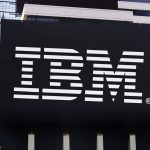A research note with Nick Kalivas, Senior Equity ETF Strategist at Invesco, who believes that while there are still headwinds facing Value investors, Value funds are cheap and there are a series of events that can turn the tide for investors interested in playing a Value comeback.
Price
First off, Value looks inexpensive compared to Growth based on historical performance and valuation when analyzing the historical price and forward price-to-earnings ratio spreads of Invesco Pure Value ETF (RPV) to the Invesco Pure Growth ETF (RPG). Currently RPV was trading at a forward PE discount of 10.8 below RPG (10.5 v. 21.3) and the spread is near the lowest in the history.
Q1 hedge fund letters, conference, scoops etc
Government Intervention and Slowdown in Global IT Spending
Second, much of the outperformance from Growth funds since 2016 is primarily due to its exposures to IT, healthcare, and communication services. Given the recent concerns over government intervention in the healthcare system (i.e. rising calls for socialized medicine going into the 2020 Presidential election), RPG’s overweight to healthcare compared to RPV(14.2% v. 5.8%) may provide an edge for Value investors. Moreover, there could also be some headwinds to technology. Gartner recently revised down its outlook for 2019 Worldwide IT spending to 1.1% from 3.2% in January. If the tech sector cools as a result of less global spending, value funds may look more attractive. (RPV is underweight technology compared to RPG 6.1% to 23.5%).
Improved U.S. - China Relationships
Finally, the Invesco Pure Value ETF has shown to outperform Invesco Pure Growth ETF on a 12-month basis when the ISM manufacturing index is rising relative to the year before and on a monthly basis when the 10 year treasury yield is increasing by more than 5% in a month. As such, Value investors will have the potential for success if China’s aggressive fiscal and monetary stimulus lead to improved global growth and a trade deal between China and the U.S. improves the global flow of trade.
RPV provides robust exposure to the Value factor:
Relative to S&P 500 Value (first generation value), RPV (S&P 500 Pure Value) has about 2x more Value exposure. According to Bloomberg, the Value factor coefficient is 1.04 for RPV against 0.39 for S&P 500 Value.[i] A higher factor load is expected to produce more return when Value is in favor. However, there is risk as a higher factor load can also lead to larger losses when Value is out of favor. RPV’s richer Value exposure is a function of the methodology. RPV’s constituents are weighted by factor and RPV does not include stocks from the core of the S&P 500. In contrast, first generation S&P 500 Value is weighted by market cap and includes stocks in the core of the S&P 500, diluting the purity of Value exposure.
Concluding thoughts:
Investors interested in playing a comeback in Value and concerned about the impact of politics on healthcare and a slowdown in IT spending may want to examine RPV. Value looked inexpensive to Growth based on historical performance and valuation, while the fears over socialized healthcare could favor Value which has a lower weight to healthcare than Growth. Likewise, unease over the pace global IT spending could benefit Value which is underweight technology to Growth. The downtrend in 10 year yields and slower growth picture provide risks to Value outpacing Growth.
[i] Bloomberg LP as of April 16, 2019













